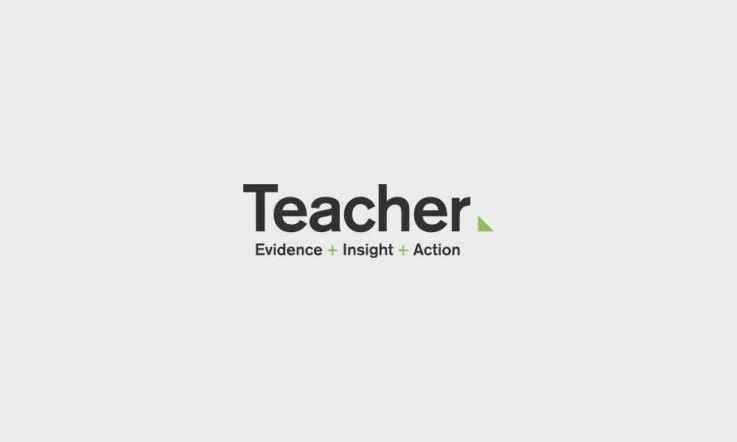Young people are growing up in a world where they are required to be financially literate in order to perform common tasks in their day-to-day lives, such as using a debit card or choosing a mobile phone plan. And, as students become increasingly independent from their families, it is likely that the number and complexity of such tasks will increase.
The OECD’s Programme for International Student Assessment’s (PISA) 2018 included an optional assessment that examines 15-year-old students’ understanding about money matters and financial literacy.
Around 117 000 students took part in this assessment, representing about 13.5 million students from 20 participating countries and economies. The results are published in the report Volume IV: Are Students Smart about Money?
The financial literacy assessment was conducted in Australia, Brazil, Bulgaria, Canada, Chile, Estonia, Finland, Georgia, Indonesia, Italy, Latvia, Lithuania, Peru, Poland, Portugal, the Russian Federation, Serbia, the Slovak Republic, Spain and the United States.
According to the OECD, these assessments do not just ascertain whether students can reproduce what they have learned about financial literacy; they also examine how well students can extrapolate from what they have learned and apply their knowledge in unfamiliar settings, both inside and outside of school.
‘The COVID-19 pandemic has also made evident the uncertain and precarious financial and employment situations in which many people find themselves. Financial literacy may improve citizens’ financial resiliency, thereby preparing them to manage and weather such unexpected shocks,’ the report says.
‘Many 15-year-olds face financial decisions and are already consumers of financial services. They are likely to face growing complexity and risks in the financial marketplace as they move into adulthood.’
Student performance in financial literacy
- Five countries performed above the OECD average in financial literacy: Estonia, Finland, the Canadian provinces, Poland and Australia.
- Three countries performed at the same level as the OECD average in financial literacy: the United States, Portugal and Latvia.
- Twelve countries performed below the OECD average in financial literacy: Lithuania, Russia, Spain, the Slovak Republic, Italy, Chile, Serbia, Bulgaria, Brazil, Peru, Georgia and Indonesia.
The report notes that 85 per cent of students, on average across OECD countries/economies, attained at least Level 2 proficiency in financial literacy. ‘These students can apply their knowledge of common financial products and commonly used financial terms to situations that are relevant to them, and can recognise the value of a simple budget. However, in five partner countries, more than one in three students did not attain Level 2 proficiency,’ it reads.
Students at proficiency Level 2 begin to apply their knowledge to make financial decisions in contexts that are immediately relevant to them. They can recognise the value of a simple budget, and can undertake a simple assessment of value-for-money. Proficiency Level 2 can be considered as a minimum or 'baseline' level, below which students may need support in order to answer questions in financial literacy.
One in 10 students across the OECD attained the highest level of proficiency in financial literacy (Level 5), which means these students can analyse complex financial products, and take into account features of financial documents that are not immediately obvious.
Boys scored a small but significant two points higher than girls in the assessment, across the OECD. The report says that although this is statistically significant, two score points is a small difference and does not reflect a notable disparity in the types of tasks that boys and girls are able to do. ‘This is especially true given the large variation in performance observed amongst both boys and girls. Despite the higher average performance of boys, there was a large overlap in the performance distribution of boys and girls, and many girls scored better than many boys in financial literacy,’ it says.
The report also note that socio-economically advantaged students performed better in financial literacy than disadvantaged students – by roughly one proficiency level, on average across the OECD – while immigrant students scored 30 points lower than non-immigrant students.
The role of parents and carers
Parents, guardians and other adult relations were students’ most common source of information about money matters. Across the OECD, 94 per cent of students reported obtaining such information from their parents.
In Australia, 96 per cent of students said they would speak to their parents for information on money matters, 65 per cent would go to the internet and 61 per cent would talk to a teacher.
‘After accounting for student characteristics, students who look to their parents as a source of information about money matters outperformed students who do not do so by 27 score points in financial literacy, on average across OECD countries and economies,’ the report says.
The data show that parents in Brazil, Bulgaria, Lithuania and Serbia were amongst the most involved in developing their children’s financial literacy.
Across the OECD, 87 per cent of students reported talking to their parents about money for things that they wanted to buy at least once a month, while roughly three in four students reported talking to their parents about their own spending decisions and saving decisions at least once a month.
In Australia, 51 per cent of students said they enjoyed talking about money matters, 89 per cent said they can decide independently what to spend their money on, and 85 per cent said they are responsible for their own money matters.
Across the OECD, 54 per cent of students hold an account at a bank, building society, post office or credit union, while 45 per cent of students hold a payment or debit card.
Student exposure to financial literacy at school
The financial literacy assessment shows that disadvantaged students in disadvantaged schools were more likely to report encountering money-related tasks in their school lessons, compared to their advantaged counterparts. But the report says that being exposed to such tasks at school was associated with lower performance, on average across the OECD.
Students who reported to have learned eight finance-related terms (bank loan, budget, debit card, entrepreneur, income tax, interest payment, shares/stocks, wage) outperformed students by at least 25 score points. ‘Students in Finland and the Russian Federation reported that they had learned and still knew the most money-related terms,’ the report says.
Student attitudes towards money
Students who reported that they could decide independently what to spend their money on (roughly 80 per cent across the OECD) scored 27 points higher on average, than students who did not report so.
The data show 73 per cent of students reported buying something online in the previous 12 months, while 39 per cent reported making a payment using a mobile phone in that same time period. Boys were more likely than girls, and advantaged students were more likely than disadvantaged students, to have engaged in these digital financial activities.
In addition, the OECD report says that confidence in using digital finance services was associated with stronger financial literacy performance. ‘In particular, students who reported being confident in keeping track of their balance online scored 29 points higher in the financial literacy assessment, on average across OECD countries and after accounting for student characteristics.’
Financially responsible behaviour and practice
The PISA financial literacy assessment found that three-quarters of students in every country or economy that participated had checked how much money they have, and that they were give the correct change, in the 12 months prior to sitting the assessment. These students scored 50 points higher than those who had not done so.
At the same time, 63 per cent of students said that they bought something that cost more money than they had intended to spend. These students scored 10 points lower in the assessment than those who had not done so.
When it comes to comparing prices in different shops when thinking about buying something, 76 per cent of student said they did this, while 69 per cent of students reported prices between physical and online shops. Thirty-eight per cent reported sometimes or always buying the product without comparing prices.
References
OECD (2020), PISA 2018 Results (Volume IV): Are Students Smart about Money?, PISA, OECD Publishing, Paris, https://doi.org/10.1787/48ebd1ba-en.
To access the full report, PISA 2018 Results (Volume IV): Are Students Smart about Money?, visit the website.



